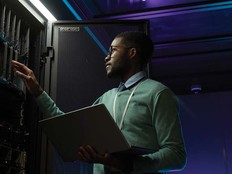University of Maryland Taps GPUs to Boost Performance of Engineering Apps
Increasingly, universities are shuttering computer labs in favor of spaces that provide virtual access to apps and software, which bolsters flexibility for students.
The University of Maryland’s A. James Clark School of Engineering has been a leader in the virtual access movement. It has provided students with anywhere, anytime access to digital academic resources since 2007.
However, as engineering applications grew more complex in recent years, the UMD IT team could no longer deliver flawless performance of their application virtualization environment.
“Engineering is really moving toward what we refer to as a digital thread, where you design, analyze, fabricate and iterate digitally,” said Jim Zahniser, executive director of engineering information technology at UMD, in a Dec. 2017 Campus Technology webinar.
In 2013, with thousands of engineering students needing access to graphically intensive software in computer labs or their dorm rooms, Zahniser said apps were often lagging behind on just Citrix XenApp.
To combat this problem, IT introduced NVIDIA GRID K2 graphics processing units (GPUs), as well as six additional Dell servers just for the heaviest computer-aided design applications.
Zahniser told Campus Technology that the combination of XenApp and the NVIDIA GPUs was so successful, that the department rolled out even more in late 2017 in hopes of shifting all of its servers over to this model.
The virtualized environment is now available to all 38,000 University of Maryland students, according to an NVIDIA report. “The engineering school has gone from 3,000 to 4,000 undergrads in a short amount of time with no additional labs needed, thanks to NVIDIA Tesla GPUs and GRID vApps software,” the report says.
With GPU-enabled servers in both data centers, Zahniser said maintenance has become easier for IT.
“Having all of the applications span the two data centers allows us to take a data center offline and have it be non-impactful for the students,” he said.
SIGN UP: Get more news from the EdTech newsletter in your inbox every two weeks!
User Education and Cloud Support Could Drive Performance
Though the improved software and hardware has solved a number of issues at UMD, Zahniser told Campus Technology that a little user education could go a long way in boosting performance.
“One of the challenges that we’ve had is that it has taken some time to educate our users on what they can do to get best performance,” he said.
For example, Zahniser said in the webinar that graphically intensive simulation files should be saved in local storage, rather than the cloud, so the data never leaves the data center and performance is at its peak.
Also, Zahniser suggested that students must know how to evaluate the quality of an internet connection before trying to run a complex application.
In addition to adding GPUs to more servers, Zahniser told Campus Technology that his team hopes to tap the cloud in the near future during times of heavy application usage.
“There are three times during the semester when our application virtualization environment gets pounded,” said Zahniser. “We have to kind of build for that big surge at this point.”
Using the cloud, UMD would be able to build its environment with only regular usage in mind and then be able to surge out onto the cloud during times of heavy usage. It has a proof of concept developed for this, but has not explored cloud-based GPUs.









